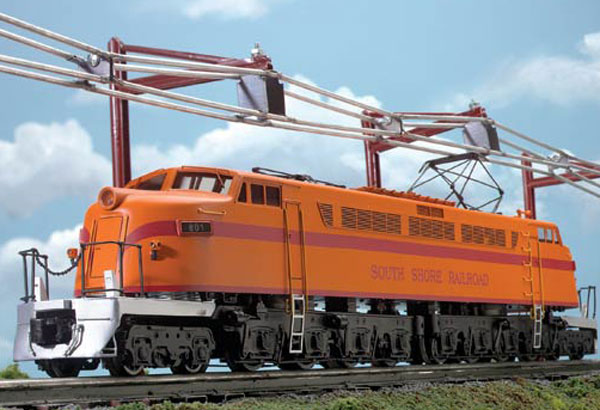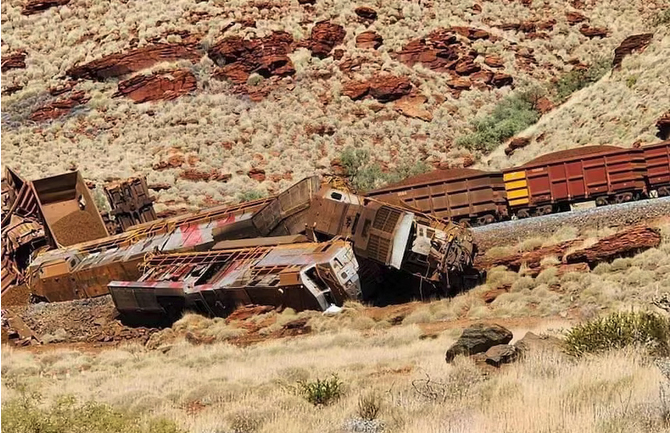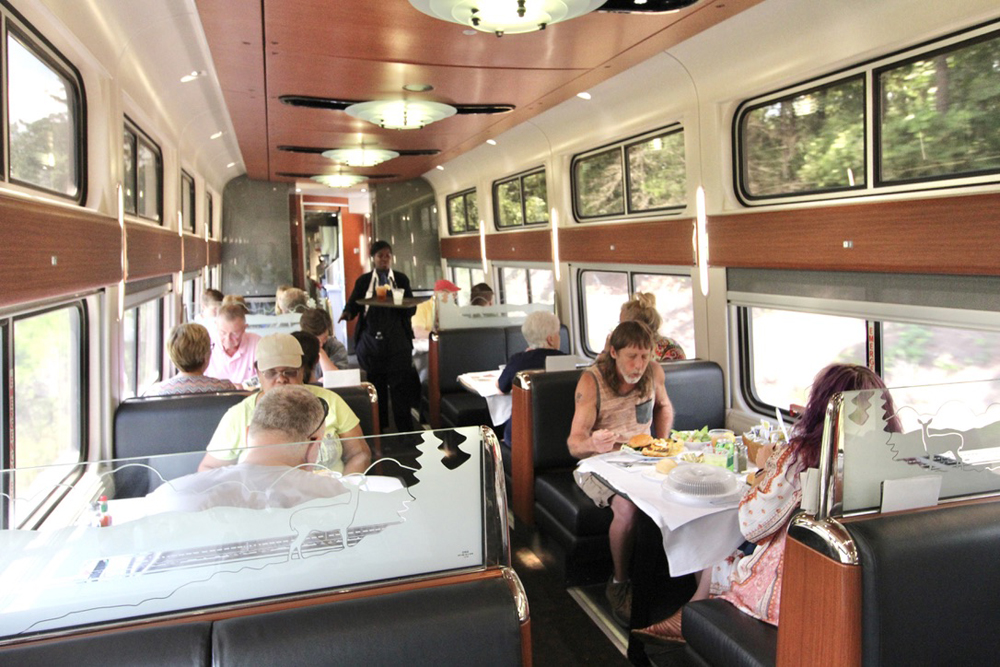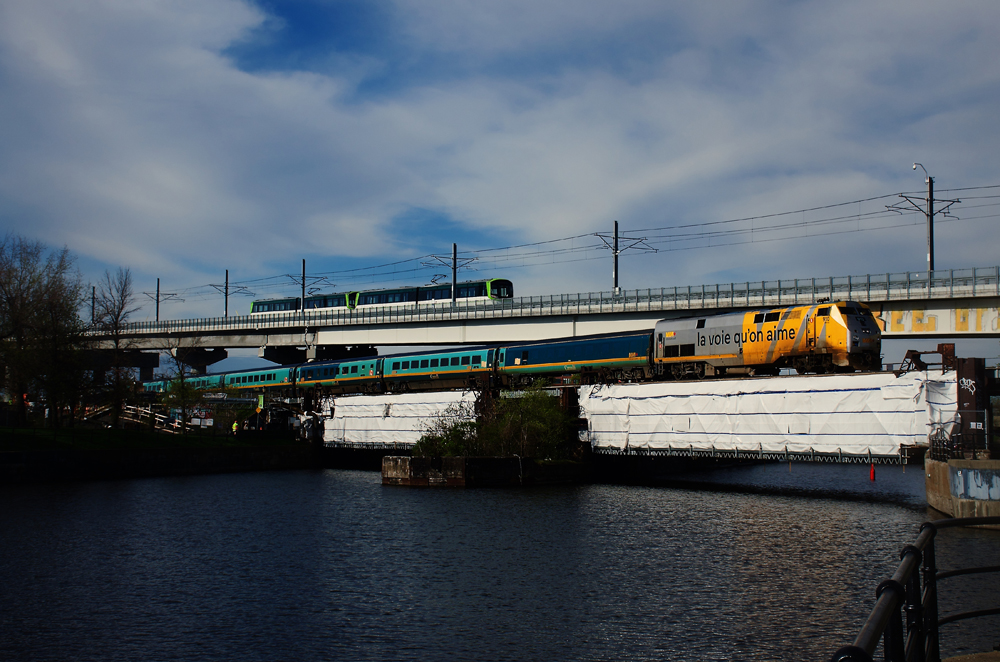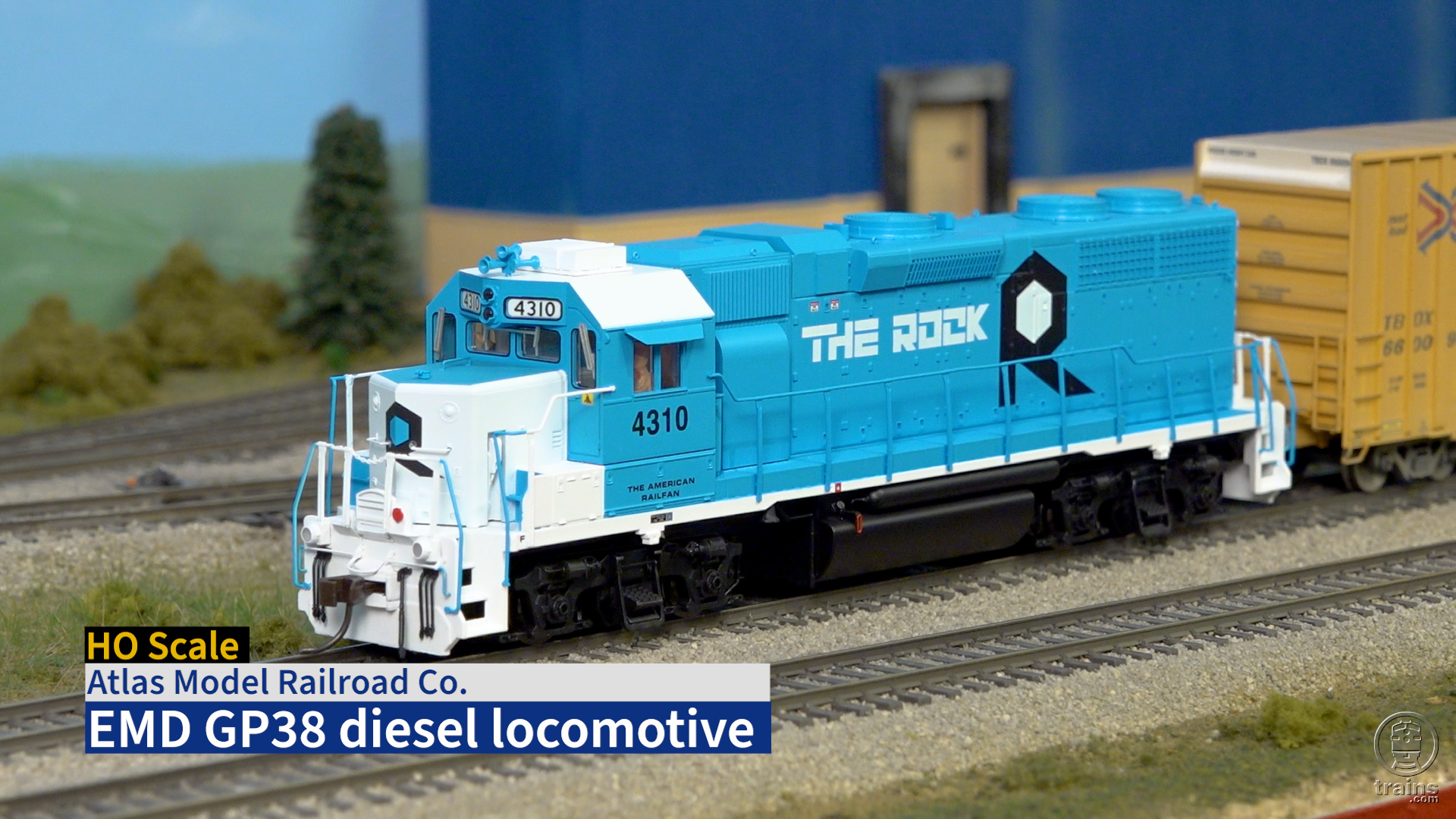The General Electric 2-D+D-2 was one of the most remarkable electric -profile locomotives ever built. Constructed for Russian railways, the GE giants were never delivered to their intended customer.
After World War II, the Soviet government planned to extend the country’s 3,000-volt electrified lines deep into Siberia. In America, General Electric engineers designed a streamlined, broad-gauge (5 feet between the rails), 4,750-horsepower locomotive for the newly electrified tracks. The General Electric 750 type had a 2-D+D-2 wheel arrangement powered by eight GE 750 traction motors. In March 1946, the Soviets placed an order for 20 of the GE locomotives.
If old Joe Stalin hadn’t been so obsessed with global domination, he might have gotten his hands on the 750s. As it was, he was more worried about building an iron curtain than an iron railway, and the GEs never made it to Moscow. Stalin’s legacy was the nickname given to the locomotives: “Little Joe.”
As a result, General Electric was left with a collection of broad-gauge, 3,000-volt locomotives to sell, and the prospects were pretty dim. In all of America, there were only two 3,000-volt electrified lines – the Cleveland Union Terminal’s short line and the Milwaukee Road’s catenary operations.
To try to unload these models, the 15th locomotive to be built was finished as a standard gauge (4 feet, 81/2 inches) engine. It was given the number “GE-750” and became a demonstrator.
In 1949, the locomotive had a three-month tour of duty on the Milwaukee Road with less than exemplary results. Though the head of the Milwaukee’s electrified division was negotiating a deal with GE, the boss of the entire railroad wanted to eliminate the electrified lines, so the sale was nixed. (A few years later, the Milwaukee Road had a change of heart and purchased the locomotives.)
At the same time the Milwaukee Road was first looking at the locomotives, the Chicago South Shore & South Bend, an electrified line running in Chicago and its northern Indiana suburbs, was looking to upgrade its freight locomotive fleet. Although its heritage was that of an interurban line, the South Shore foresaw a future of steady growth in freight service, so it wanted some big power.
The railroad purchased three of the 750s for freight service. At its Michigan City, Ind., shops, the railroad converted the locomotives to run on 1,500 volts and removed the multiple-unit controls. Then it numbered the trio 801, 802, and 803.
In day-to-day operation, the South Shore Little Joes were rated at 5,600 horsepower, while the Milwaukee versions were rated at 5,110 horsepower. In service, the Little Joes did an exemplary job moving tonnage for the South Shore on conventional railroad lines as well as on street trackage. If these 88-foot-long electrics were an impressive sight in the Rocky Mountains, they were even more imposing rolling down a busy street in Illinois!
The last of the South Shore Little Joes was retired in February 1981, and two survive today: the 802 at the Baltimore & Ohio Railroad Museum in Baltimore, Md., and the 803 at the Illinois Railroad Museum in Union, Ill.
The model
With a frame measuring 21 inches (84 feet in O scale), a coupler-to-coupler length of 211/2 inches (86 feet in O scale), and a weight of more than 10 pounds, this brass model gets your attention. Once you’ve gotten over the size and weight, you can focus on the attractiveness of this locomotive.
Details start at the pilots at each end. The pivoting die-cast metal pilots feature cast-in safety tread, handrails, and even tiny safety chains. The coil couplers are recessed well into the pilots no overly long coupler arms here!
The lines of the nose are as graceful as those on any E6 or E7 streamlined diesel. To my surprise, the brass crew-access doors on each nose as well as the four side doors are sprung and can be pushed open. Handrails bracket each side door, and there are add-on grab irons for roof access alongside two of these doors. Handrails can also be found on the sides of each nose and above the windshields and the separately applied wiper arms.
The carbody is made of brass, and it has been wonderfully crafted with the smoothest of noses and curves. Along the sides you’ll find see-through screens and vents made from etched metal.
The roof is pure simplicity. Add-on horns are over each cab, and there are two pantographs that can be raised or lowered by hand. In the pantograph recesses are structural supports and simulated power lines to carry electricity from the pantographs to the traction motors. Very nice!
There are two large access hatches between the pantographs. One you can remove; the other is fixed. There is some very nice latch and bolt detail cast into these pieces. Beneath the removable lid are the TrainMaster Command Control run/program switch, the SignalSounds/RailSounds switch, and a K-Line speed-control switch. (Yes, this Weaver locomotive uses both Lionel and K-Line parts.)
One of those special “I didn’t see that” details can be found if you tilt the locomotive and look beneath the bottom of the body, just ahead of the side cab windows.
There you’ll discover some hardware and simulated chains. Frankly, I didn’t see these features when I first examined the model, but they stood out in one of the low-angle photographs.
I was surprised, but not bothered, that inside the cab there isn’t any interior detail or even a crew figure.
The running gear is all die-cast metal, and boy does it add some weight. The frame is a fairly faithful reproduction of the frame of the prototype.
Of special note, however, is that the lower cab steps are affixed to the shell rather than the trucks.
If you look at the Little Joe closely enough, you may say, “Whew, that is a mighty big gap between the running gear and the carbody.” Well, let me assure you that there was a pretty large gap between the body and the running gear on the real thing. There’s plenty of air between the top of the trucks and the bottom of the body.
While the orange South Shore paint scheme is simple, paint application on our sample was flawless. The only smudges were from the model being handled by my grease-covered fingers!
The model is available from Weaver in three paint schemes with two road numbers apiece: orange South Shore, maroon and yellow Milwaukee Road “Little Joe” and orange and black Milwaukee Road. Weaver’s website reports that the orange and black version is sold out at the factory, however it still may be available at dealers.
On the test track
Our sample of the Little Joe was “fully loaded” with Lionel’s TrainMaster and RailSounds systems, as well as K-Line’s speed control. The latter was a special surprise, since speed control is probably the most useful “value-added” feature you can have in any model locomotive.
Motor and mechanical operation was very quiet. When our sample was running on one test layout counterclockwise with the sound turned off, we noticed a slight rubbing sound that wasn’t present when we ran it clockwise. Go figure.
The sound system is robust and does a good job of reproducing the hum of an electric-profile locomotive. You can hear the traction motors ramp up, so to speak, when the throttle is raised. The horn and bell will wake up anyone dozing at a grade crossing. Various operational sounds, like compressors, give depth to the sound system.
We tested our sample locomotive in four different environments: with speed control on and off, and in command-control and conventional-control modes. This produced some rather significant low-speed variations.
Our baseline test was in conventional-control mode with speed control engaged. This delivered a low speed of 3.3 scale mph. Conventional-control mode with speed control off produced a low speed average of 27.1 scale mph.
In TrainMaster Command Control mode with speed control on, the low-speed average was 3.91 scale mph, while in command-control mode with speed control off, we recorded a 14.4-scale-mph average. For the record, our high-speed average was 90.9 scale mph.
Clearly, speed control makes a difference. Again, kudos to Weaver for adding this excellent feature. Assisted by four traction tires (two on each D truck), the 10-pound, 6-ounce locomotive recorded 1 pound, 14 ounces of tractive effort.
In the department of dubious results, occasionally both front and rear headlights would remain illuminated when the model was in command-control mode (the rearward-facing light should turn off), and there was some headlight flickering when running the locomotive at the very lowest speeds.
Normally, flickering lights are an indication of weak TMCC reception, but we did not experience any control problems during testing.
One interesting note to keep in mind, as per the instructions, if you want to run “forward only,” just flip the SignalSounds/RailSounds switch to the SignalSounds position.
The coil couplers functioned smoothly, with nice RailSounds “ca-chunk” effects simulating the uncoupling action.
Make no mistake, the Weaver Models Little Joe electric-profile locomotive looks superb. It is a nice operator, and the inclusion of K-Line’s speed-control system is a strong addition that will make your train operating even more fun. If you like electrics, or just neat streamlined locomotives, the Weaver Little Joe is a must-have.





